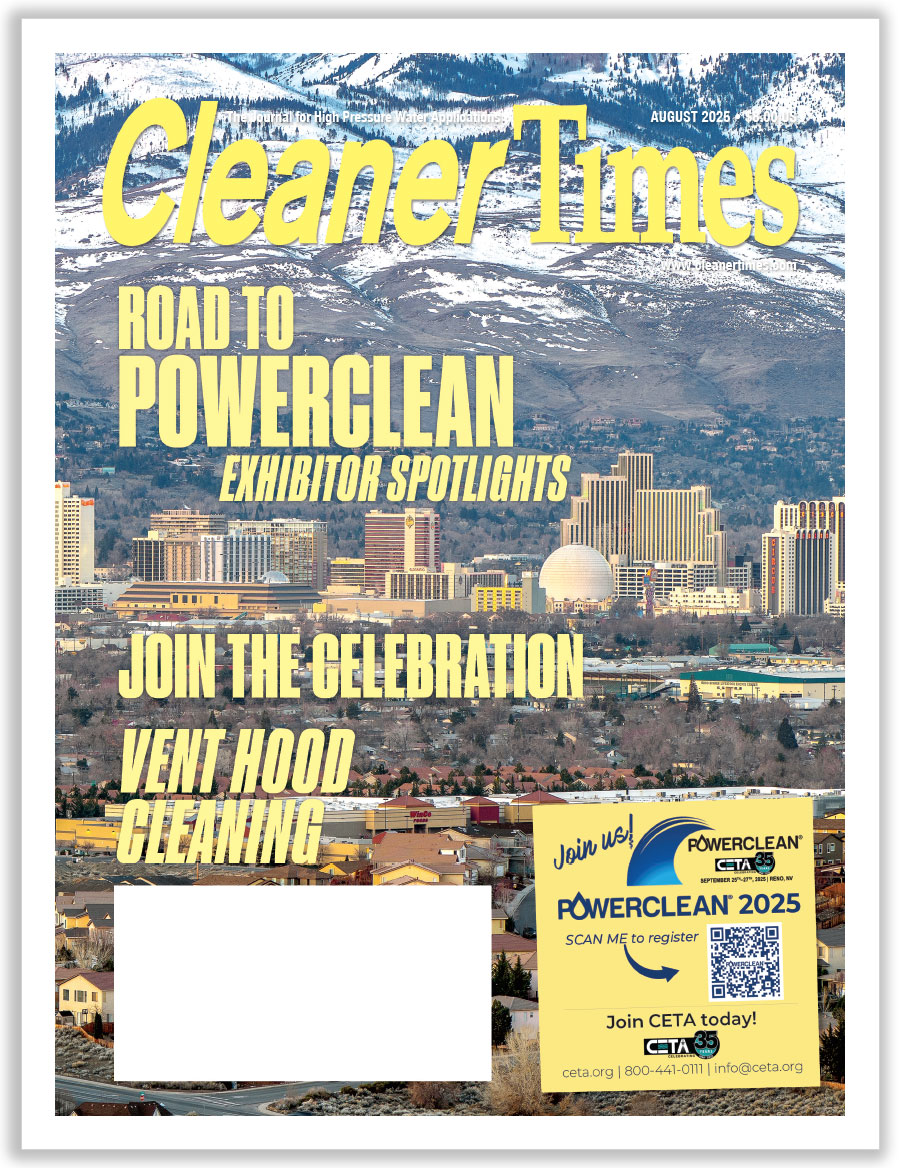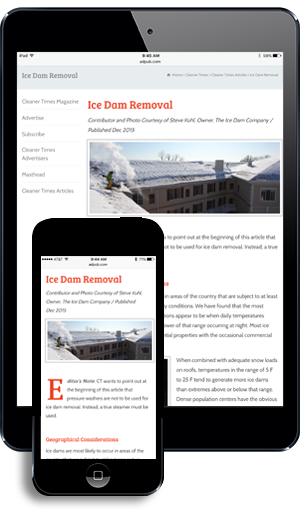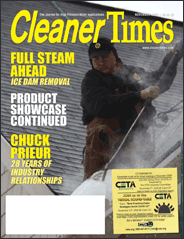
Eco-Friendly Practices and Regulations
by Diane M. Calabrese | Published October 2025

Adopt eco-friendly practices and regulatory compliance will take care of itself, true? True, sometimes. But even an eco-friendly approach can run counter to the rules set by federal, state, or local authorities. Know what the expectations are in the jurisdiction where work is being done. While it is complicated, to be sure, it is also doable; and everyone has a role to play.
“With all the customers that come to us for help, I always try to educate them about existing environmental regulations,” says Aaron Auger, water treatment/dealer division manager at Mi-T-M Corporation in Peosta, IA. “By doing so we are working together toward a solution that will address their issues as well as getting them to comply with any environmental concerns they may have.”
The variables are many and must be considered as a matter of routine. “No two projects are ever the same, but we can lean on years of experience to give a customer the best solution to any environmental issue they may have,” says Auger.
In one sense we should be grounded in meeting environmental regulations, which are not new. But even the best efforts to comply can pose some difficulties.
“Most environmental laws have been around for over 50 years,” says Auger. “However, it’s often hit or miss as to how those laws are enforced.”
Auger’s company works with clients to develop custom solutions. And those solutions aim to ensure that regulatory requirements have been met.
“Most projects that come our way are people who are looking to either protect their property investment or get ahead of compliance laws before they have an issue,” explains Auger. “I’ve been involved in a lot of projects over the years where someone is going to sell a business only to find out they must clean up a section of their property where they may have ignored and contaminated an area. If noticed, this is a significant cost to the property owner and one that will likely be uncovered prior to a piece of property being sold.”
Melding eco-friendly and business-friendly while meeting regulations ultimately saves everyone time and money, and it can be done. “It all comes down to doing the right thing,” says Auger. “We all know the difference between what’s right and what’s wrong, which brings me back to my point about educating the customer.”
Why put the customer at the center? “By first addressing their issues and then presenting a solution to them, we are working toward a common goal,” explains Auger.
“I’m fortunate enough to work with a very educated staff here at Mi-T-M, from our engineers to marketing to management who allow us to think outside of the box to offer solutions to unique projects all over the country,” says Auger. “We have worked on some interesting applications during my 25 years of doing this and welcome all challenges that are presented to us.”
Designed Eco-friendly
The monikers “eco-friendly” and “green” convey slightly different ideas. Practices friendly to the environment strive to do more with less through reduction in use of resources as well as reuse and recycling of materials of all sorts.
Green practices incorporate natural methods in efforts to do things like capture and purify stormwater, prevent runoff, and separate contaminants from water. A rain garden, which captures and slows the movement of rainwater so some of the precipitation can percolate through the soil, is green.
A rain garden is also eco-friendly because water that descends through it to ground water spaces has done so without rushing across streets laden with oil residues. Capturing wastewater from power washing is eco-friendly, but it’s not precisely green.
The U.S. Environmental Protection Agency encourages “green” to be part of the thinking in any design-build project. Moreover, it advises that a comprehensive project should include attention to maintenance.
By thinking about maintenance at the inception of infrastructure or any system, builders can evaluate what the most environmentally friendly maintenance method will be. For instance, wastewater sewers would be built into all parking garages, city-scape plazas, etc. The simple things would not be forgotten or ignored.
Planning for maintenance is an essential component of green infrastructure. The EPA document “Operation and Maintenance Considerations for Green Infrastructure,” which is available at the agency’s website, provides tips on how to develop a stormwater management system that meets legal standards and can feasibly be maintained. Stormwater is the focus of the document just cited, but it can be used as a starting point for how to think about any environmental issue, such as disposal of wastewater from cleaning.
The G3 [Green Streets, Green Jobs, Green Towns] program at EPA emphasizes integrated planning, design and build approaches, and operation and maintenance. A G3 library allows anyone to learn more about projects across the country that make environmental-friendliness part of their scope.
Competition for resources is as old as human civilization. Which resource has brought the most contentious disagreements? Water.
Disputes over water rights for cattle and irrigation and power plants have been serious and still are. They have also served as the plotlines for novels and movies. Scale up to the entire world, and it’s possible to argue that access to an abundant and steady supply of freshwater could do more to promote harmony among people than any other immediate change on the global scene.
Without a reliable supply of potable water, communities cannot function or farm. Without navigable waterways, commerce becomes more costly and difficult. The list is a long one. And it now includes the thirst for water from larger and larger data centers, as well as the coming proliferation of small nuclear reactors to power centers.
So great is the need for rational choices about how water is used and how it cycles through communities and across the Earth that it now receives intense focus from many groups. One such group is the WateReuse Association headquartered in Alexandria, VA.
As we write in mid-August, there is pending legislation (H.R. 2940, Advancing Water Reuse Act) in the hands of the House Ways and Means Committee, which will, if it succeeds, provide tax credits for industrial facilities as they succeed at reusing water on site. (H.R. 2940 includes other elements as well.)
Water reclamation and water reuse on site has a solid foundation in our industry. Attentiveness to minimizing use of water and accelerating the return of freshwater to the surface waters of the world puts our industry ahead of many others.
Rethink
To reduce, reuse, and recycle, we could add a fourth “R.” Rethink.
As eco-friendly practices and regulations meet, one facet tends to be either ignored or overlooked. That facet is longevity (durability).
The basic three Rs regarding stewardship of the environment are good, but building for longevity is better. Build not only with maintenance in mind, but build components, tools, and structures to last.
Accumulating failed seals or used filters might seem to be insignificant matters, yet the discards are indicators of how many manufactured items go quickly to waste. Longer service for tools and structures cuts back the fuel and water needed for new manufacturing.
Regulations help nudge everyone to do their best. But are we really doing our best in the creative solutions category of longevity? It’s something we should think about more.
Meanwhile, the basics must never be neglected. Organizations such as PWNA and UAMCC keep their members up to date on the little things that add up to eco-friendly approaches. And many institutions that contract with members of our industry include well-thought-out instructions that have broad application.
For example, the University of North Carolina offers a document titled “Pollution Prevention During Pressure Washing” that’s a model of brevity and information. It stresses starting with the least environmentally impactful method.
Contractors know the progression. Water could be used to push aside debris before washing but using a sweeper or broom conserves water.
Chemicals can be added to water to enhance cleaning. But by testing the surface first, a contractor might learn that water pressure and flow alone will get the job done.
Drain protection, water containment, and wastewater collection are all expected to be part of the repertoire of a contract cleaner. So, too, is the ability of the contractor to identify unusual soiling—grease, motor oil, sediment from construction, etc.—and adopt a method to remove it that follows all environmental regulations.
As for how we are doing as a nation in environmental friendliness, let’s write only that we could do better. Regulations increase awareness and encourage best practices, but responsible individual action that’s consistent matters most.
On the good news side, The ASCE [American Society of Civil Engineers] issued its 2025 report card on the state of U.S. infrastructure, and no category received a grade below a D for the first time since 1998.
Unfortunately, the stormwater category received a D and the drinking water category a C-. The overall score for 18 categories is a C.
In truth, nothing takes care of itself. We each have a lot of friendly work to do.





